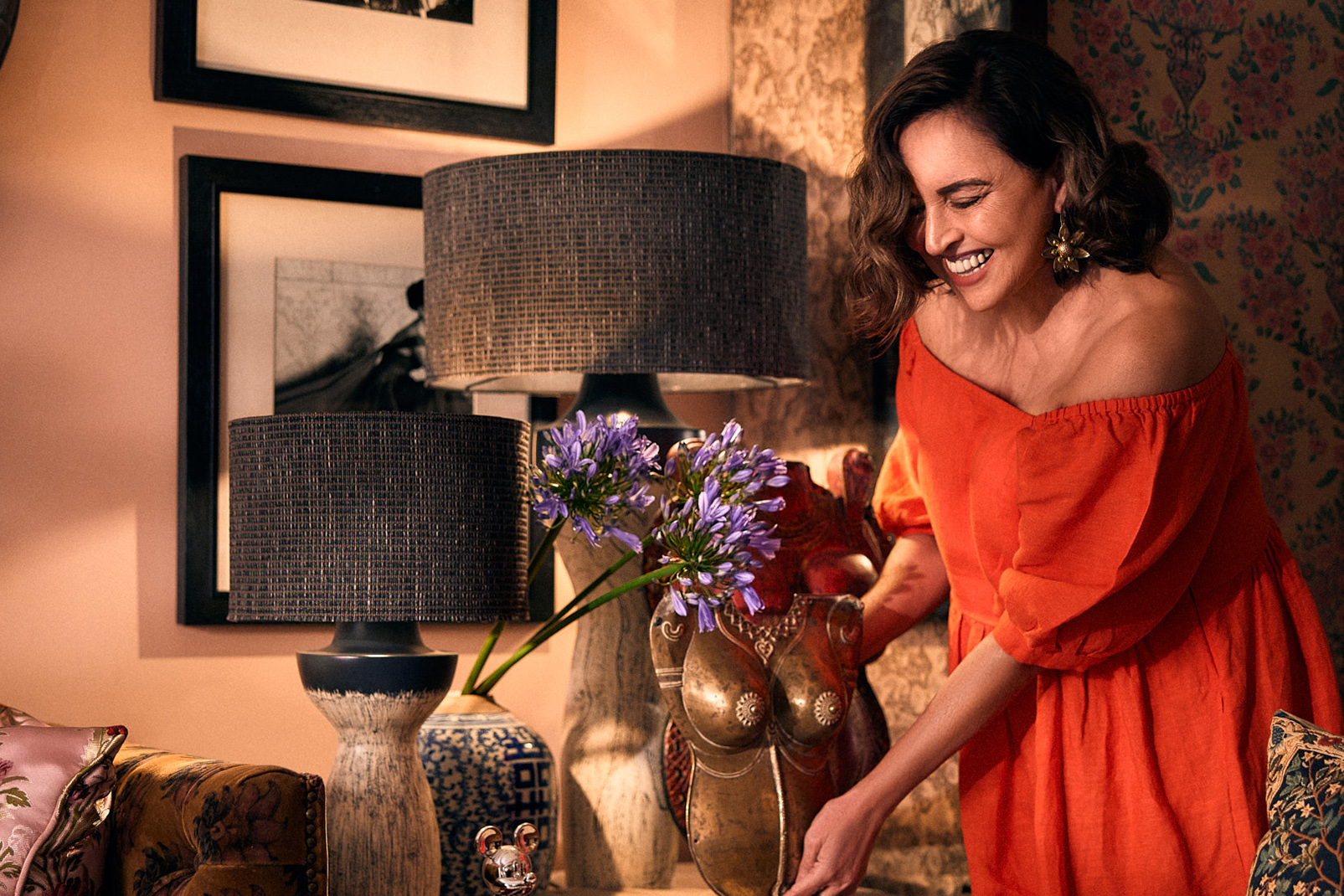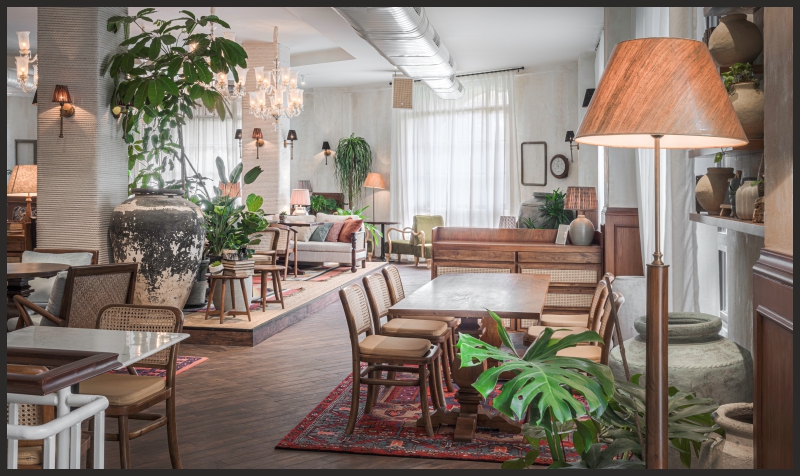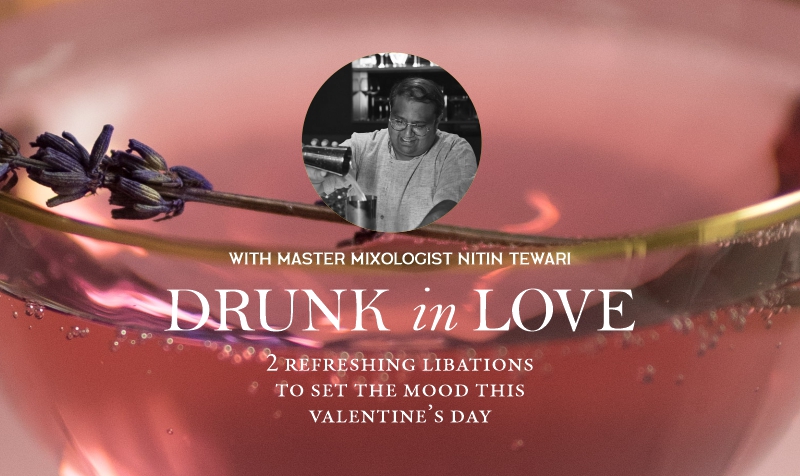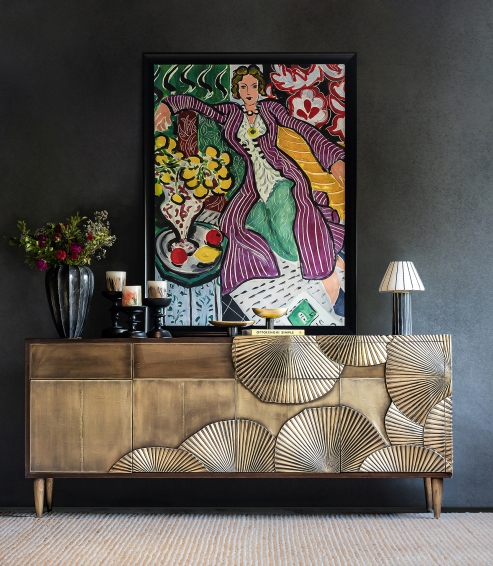We use cookies to make your experience better. To comply with the new e-Privacy directive, we need to ask for your consent to set the cookies. Learn more.
EMOTIONAL DESIGN
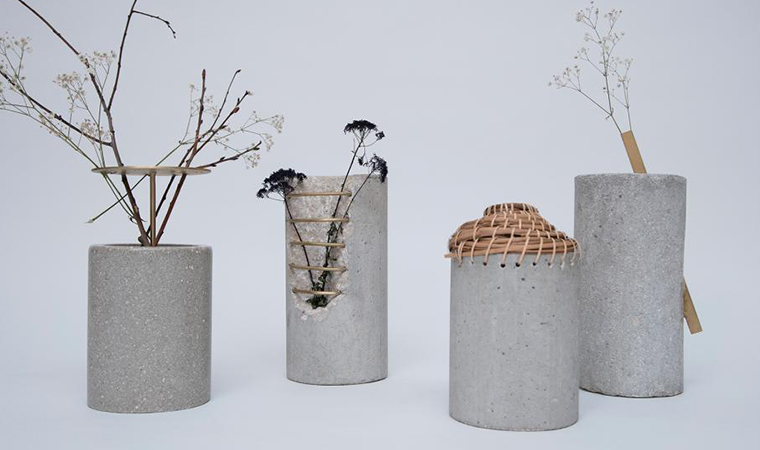
Your home is the mirror of you. Yet the perfect sofa with the plush cushions is not what makes a home, neither is the well-appointed bar or kitchen. You are a collage of everything you’ve ever experienced and everywhere you ever went. Therefore, your home is a feeling and a space to feel comfortably you.
In an increasingly digital era that has a tendency to create a sense of isolation, architects and designers are recognizing the intimate relationship an individual has with his or her immediate physical surroundings. They are increasingly transitioning to imbue spaces with deeper sensory resonance, creating memorable spaces that calm, energize, uplift, and create happiness.
Emotional design strives to create products, spaces, and experiences that elicit appropriate emotions, in order to create a positive experience for the user. To do so, designers consider the connections that can form between users and the objects they use, and the emotions that can arise from them. The emotions a product elicits can strongly influence users’ perceptions of it.
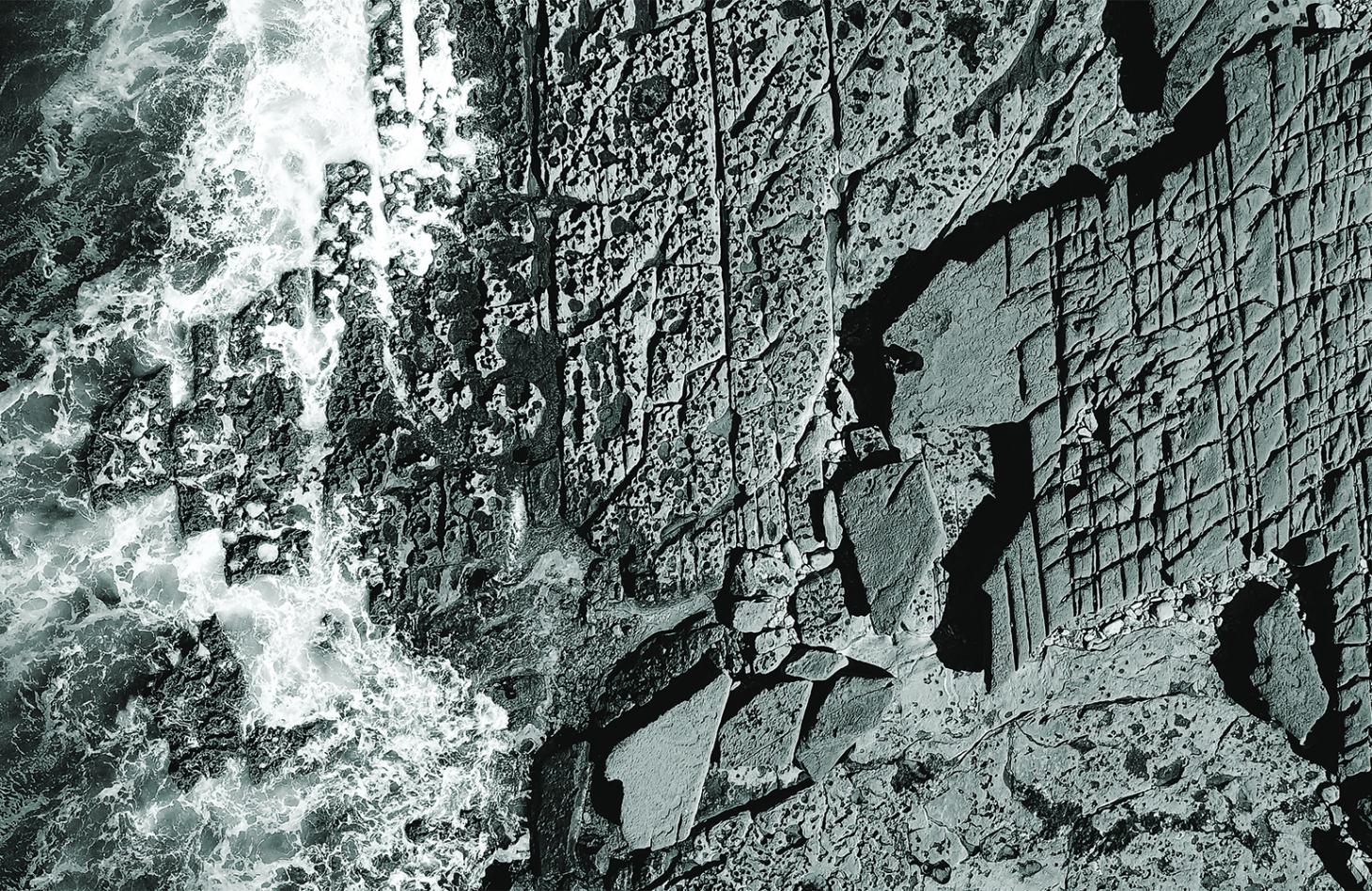
Details of Innis Oirr, a remote island in Ireland mostly composed of 350-million-year-old limestone. Photography, Based Upon wallpaper. Image @Wallpaper.
Based Upon, an artists’ studio based in London, creates customized pieces of contemporary art and design for clients around the world. Founded by twin brothers Ian and Richard Abell, the organization has since grown into a thriving collective, with each artist bringing a unique eye and hand for craftsmanship. As part of a digital residency with Wallpaper Magazine, Based Upon designed artworks to be placed within therapeutic environments such as hospitals, refuges and rehabilitation centres to satisfy a need for accessible sanctuary. Whether for 30 seconds or 30 minutes, one is invited to pause and take a break from daily distractions to favour a more cosmic journey. Take a deep breath, or two (or three) and take a gentle leap into a state of grounded stillness. From the outer landscapes of Based Upon’s artwork III, you can take celestial flight into your very own inner landscape. Embrace the cosmic calm and join in a digital mandala of divine meditation.
Step inside Based Upon’s immersive artwork III, one of the 44 Wallpaper Handmade projects designed to rocket you into a meditative state. Image @Wallpaper.
Simplicity, which is the basis of modernism, is what people emotionally respond to in order to become calmer. Certain materials like stones and slate tend to make our bodies feel better because they are completely natural. In contrast, manufactured things tend to be colder.
Bjerre-Poulsen, one of the founding partners at Norm Architects Copenhagen designed and decorated this Danish home – a masculine, raw and beautiful place. To foster synchronicity with the surrounding landscape, luxurious tactile materials and finishes were introduced throughout: plastered brick walls, soap-finished oak, marble and stone in light and grey shades, all of which will patinate elegantly over the coming years, connecting ‘the interiors with the surrounding nature in a new and improved way,’ says Bjerre-Poulsen.
A Danish modernist home gets a minimalist interior makeover by Norm Architects
Interior design details were considered with a similar sensitivity, continuing a look of spare, unfussy serenity. For this house, simple furniture pieces in wood, leather and other natural materials were thus chosen to bring about emotions of serene living throughout the space.
Feelings have suddenly become more germane, and some designers are aiming to create spaces that make one tremble, sigh, or fall into a trance-like state. French lighting designer Hervé Descottes created a dreamy quality in the lobby of Conrad New York Hotel through orb-shaped LED lights that fall on Sol LeWitt’s Loopy Doopy mural, with tones ranging from deep blues to purples every 20 minutes: The Doppler Effect creates a sensation similar to being at the theatre in the viewer.
Hervé Descottes created a dreamy quality in the lobby of Conrad New York Hotel through orb-shaped LED lights that fall on Sol LeWitt’s Loopy Doopy mural. Image @ArchitecturalDigest.
Colour is another way of accomplishing an emotional dialogue. The colours in our environment have a definitive effect on or moods and emotions. The use of raw textures can be found in spades at the recently opened 1 Hotel Brooklyn Bridge in Brooklyn, where light pours in from wraparound floor-to-ceiling windows in an open-air-like design, blurring the lines between indoors and outdoors.
Kemper Hyers of Starwood Capital, designer of the hotel, says there was a lot of attention paid to creating an ambience using unprocessed materials, such as unfinished wood reclaimed from New England factory buildings, which have an honesty and purity to them, as well as warm lighting that signals the brain to calm down.
Once you put color on the walls, it’s time to decide how to fill the space. Every object chosen to fill a space helps to inform its function. But, beyond that, the combination of every item that fills an interior – from the seating arrangements, to the wall hangings, and down to the coasters that sit on your coffee table – act as an expression of our personalities and desires.
French architecture studio Atelier Ordinaire has completed a prefabricated house in the Bourgogne region featuring an interior lined with knotted timber boards to complement the surrounding nature. Spread sparsely across the angular walls of the building are a series of highly crafted oak and ash products that create a pleasing sense of continuity throughout. Clusters of stools by German designer Steffen Kehrle also pepper the space alongside his Plug shelves that work equally well next to the wall or as a room divider.
The architects ensured the house meets the spatial requirements of its occupants, by keeping the décor minimal as also to induce a feeling of contentment and peace. Image @Dezeen.
Minimalist furniture by Stattmann Neue Moebel inside Atelier Ordinare’s wood house Prefab. Image @Dezeeen.
While emotional design alone does not make an aesthetic experience, it has the power to inspire strong feelings in users, emotions which equate in high rates of retention and positive well-being. You don’t have to compute anything. There’s no secondary mental process required. You can see time vs. space. It’s very physical. We are overly indulged in the digital and we need things that ground us in our lives and in our spaces.
Your home is the mirror of you. Yet the perfect sofa with the plush cushions is not what makes a home, neither is the well-appointed bar or kitchen. You are a collage of everything you’ve ever experienced and everywhere you ever went. Therefore, your home is a feeling and a space to feel comfortably you.
In an increasingly digital era that has a tendency to create a sense of isolation, architects and designers are recognizing the intimate relationship an individual has with his or her immediate physical surroundings. They are increasingly transitioning to imbue spaces with deeper sensory resonance, creating memorable spaces that calm, energize, uplift, and create happiness.
Emotional design strives to create products, spaces, and experiences that elicit appropriate emotions, in order to create a positive experience for the user. To do so, designers consider the connections that can form between users and the objects they use, and the emotions that can arise from them. The emotions a product elicits can strongly influence users’ perceptions of it.
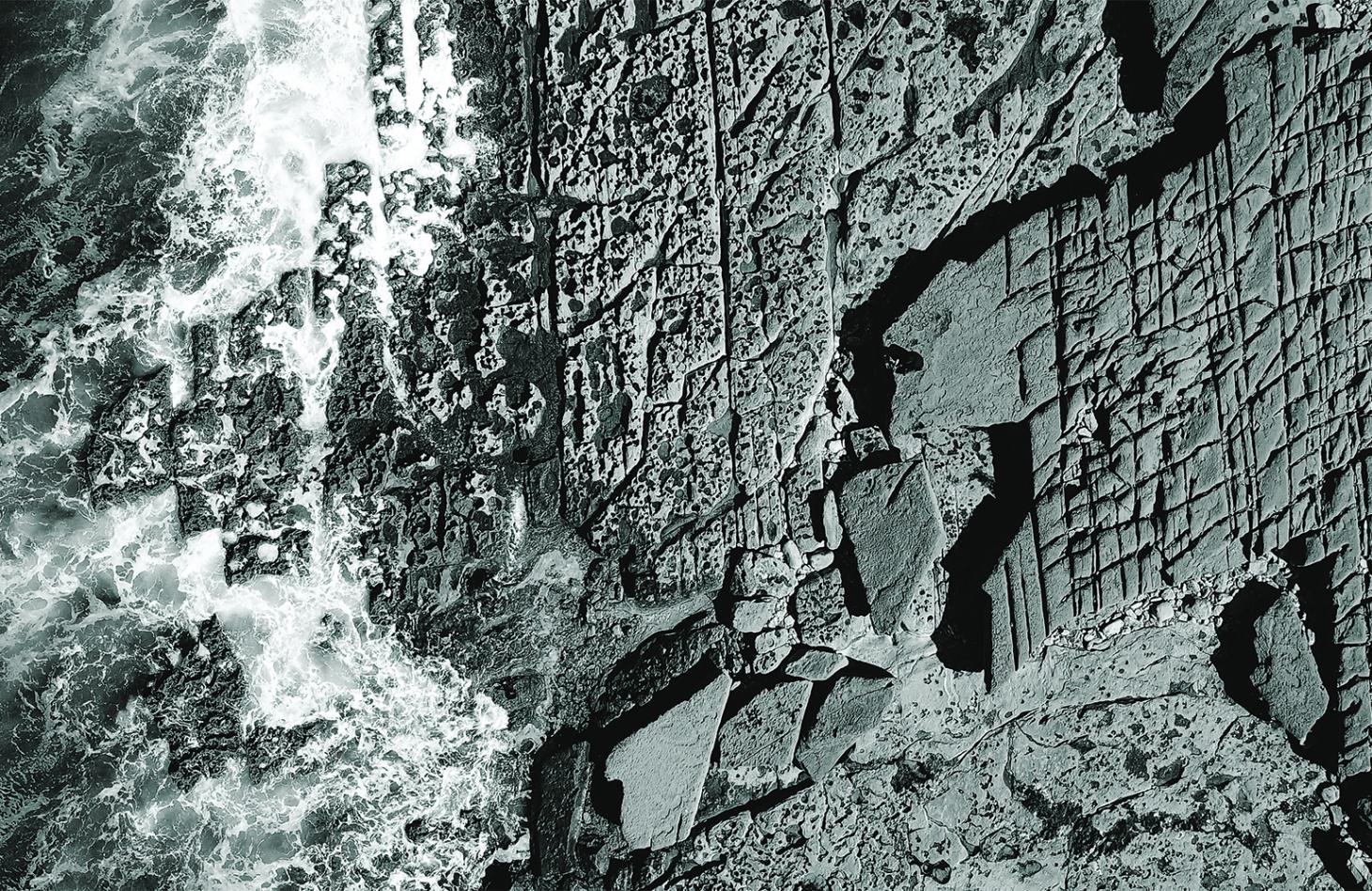

Details of Innis Oirr, a remote island in Ireland mostly composed of 350-million-year-old limestone. Photography, Based Upon wallpaper. Image @Wallpaper.
Based Upon, an artists’ studio based in London, creates customized pieces of contemporary art and design for clients around the world. Founded by twin brothers Ian and Richard Abell, the organization has since grown into a thriving collective, with each artist bringing a unique eye and hand for craftsmanship. As part of a digital residency with Wallpaper Magazine, Based Upon designed artworks to be placed within therapeutic environments such as hospitals, refuges and rehabilitation centres to satisfy a need for accessible sanctuary. Whether for 30 seconds or 30 minutes, one is invited to pause and take a break from daily distractions to favour a more cosmic journey. Take a deep breath, or two (or three) and take a gentle leap into a state of grounded stillness. From the outer landscapes of Based Upon’s artwork III, you can take celestial flight into your very own inner landscape. Embrace the cosmic calm and join in a digital mandala of divine meditation.


Step inside Based Upon’s immersive artwork III, one of the 44 Wallpaper Handmade projects designed to rocket you into a meditative state. Image @Wallpaper.
Simplicity, which is the basis of modernism, is what people emotionally respond to in order to become calmer. Certain materials like stones and slate tend to make our bodies feel better because they are completely natural. In contrast, manufactured things tend to be colder.
Bjerre-Poulsen, one of the founding partners at Norm Architects Copenhagen designed and decorated this Danish home – a masculine, raw and beautiful place. To foster synchronicity with the surrounding landscape, luxurious tactile materials and finishes were introduced throughout: plastered brick walls, soap-finished oak, marble and stone in light and grey shades, all of which will patinate elegantly over the coming years, connecting ‘the interiors with the surrounding nature in a new and improved way,’ says Bjerre-Poulsen.
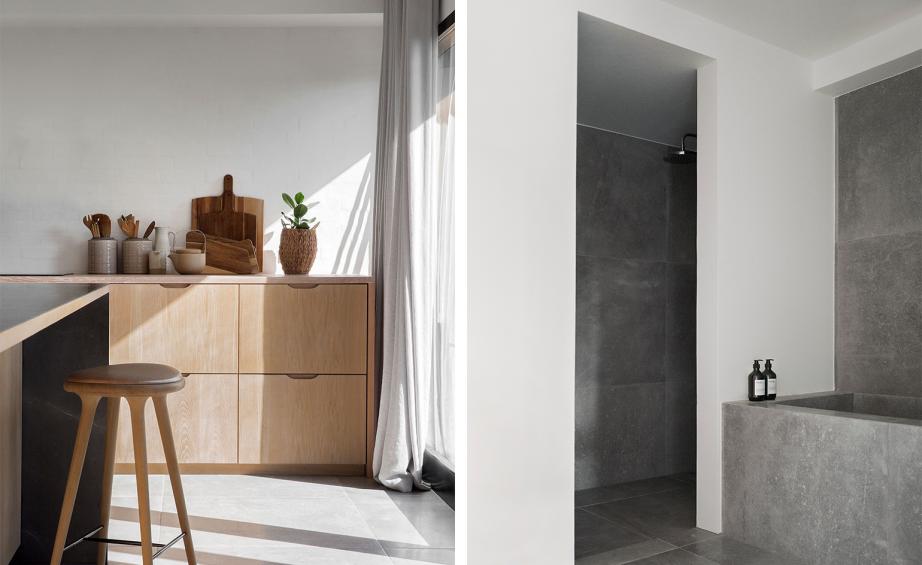

A Danish modernist home gets a minimalist interior makeover by Norm Architects
Interior design details were considered with a similar sensitivity, continuing a look of spare, unfussy serenity. For this house, simple furniture pieces in wood, leather and other natural materials were thus chosen to bring about emotions of serene living throughout the space.
Feelings have suddenly become more germane, and some designers are aiming to create spaces that make one tremble, sigh, or fall into a trance-like state. French lighting designer Hervé Descottes created a dreamy quality in the lobby ofhttps://www.hilton.com/en/hotels/nyccici-conrad-new-york-downtown/ Hotel through orb-shaped LED lights that fall on Sol LeWitt’s Loopy Doopy mural, with tones ranging from deep blues to purples every 20 minutes: The Doppler Effect creates a sensation similar to being at the theatre in the viewer.
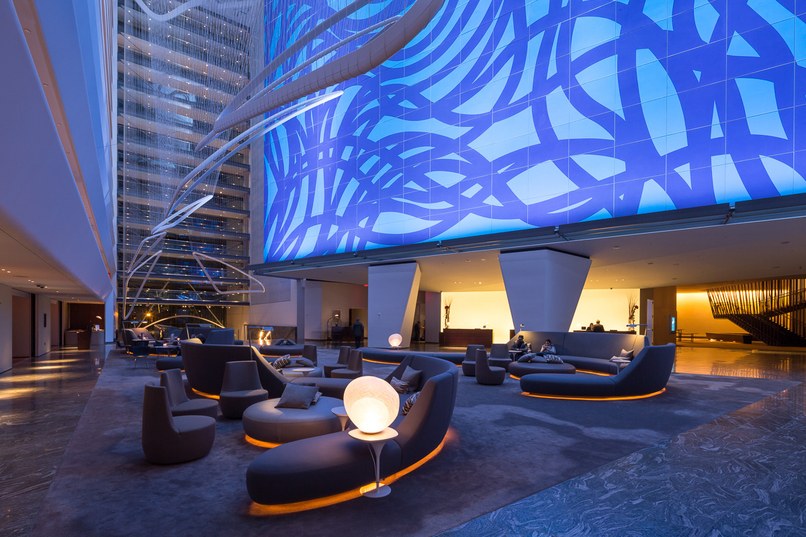

Hervé Descottes created a dreamy quality in the lobby of Conrad New York Hotel through orb-shaped LED lights that fall on Sol LeWitt’s Loopy Doopy mural. Image @ArchitecturalDigest.
Colour is another way of accomplishing an emotional dialogue. The colours in our environment have a definitive effect on or moods and emotions. The use of raw textures can be found in spades at the recently opened 1 Hotel Brooklyn Bridge in Brooklyn, where light pours in from wraparound floor-to-ceiling windows in an open-air-like design, blurring the lines between indoors and outdoors.
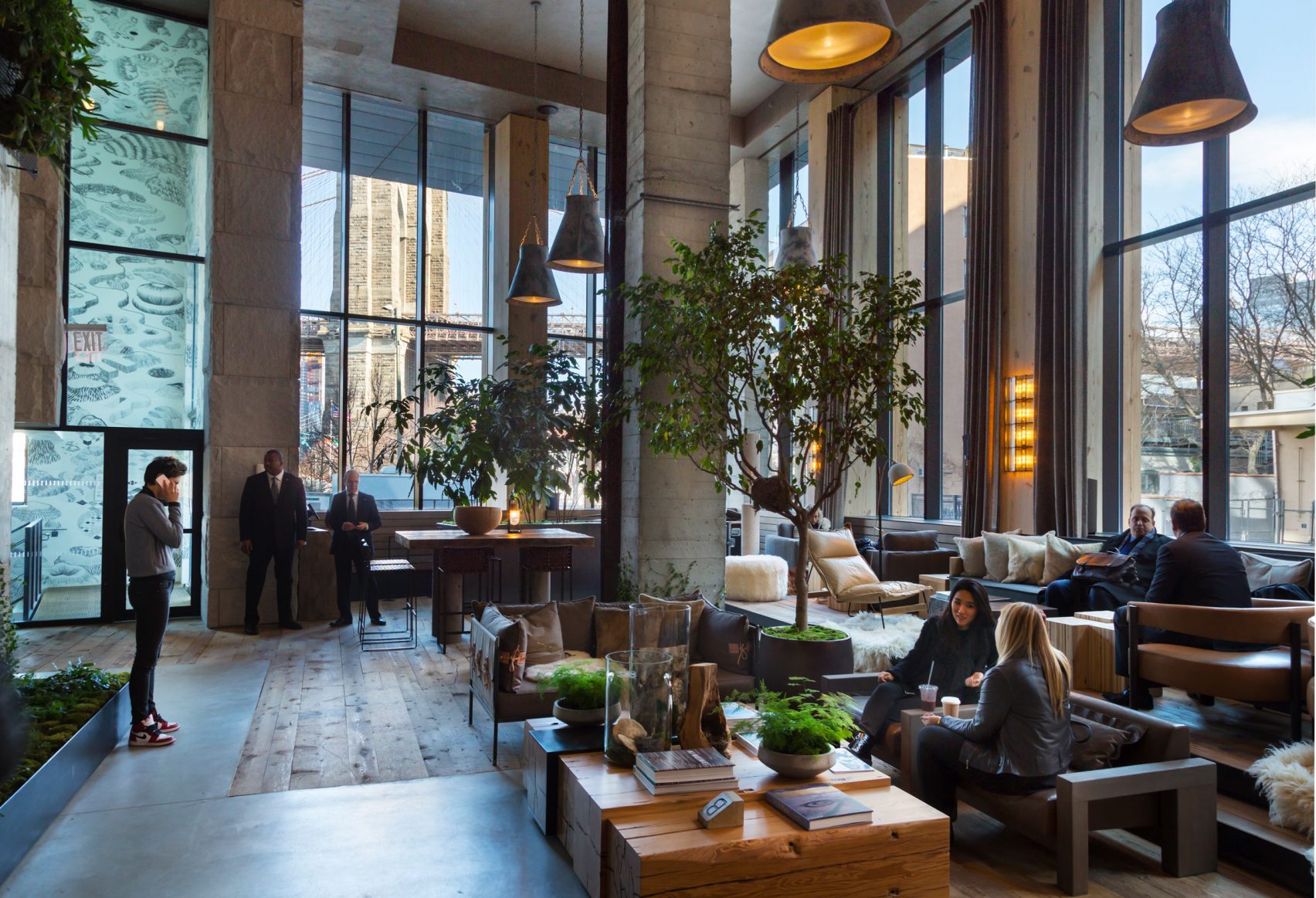

Kemper Hyers of Starwood Capital, designer of the hotel, says there was a lot of attention paid to creating an ambience using unprocessed materials, such as unfinished wood reclaimed from New England factory buildings, which have an honesty and purity to them, as well as warm lighting that signals the brain to calm down.
Once you put color on the walls, it’s time to decide how to fill the space. Every object chosen to fill a space helps to inform its function. But, beyond that, the combination of every item that fills an interior – from the seating arrangements, to the wall hangings, and down to the coasters that sit on your coffee table – act as an expression of our personalities and desires.
French architecture studio Atelier Ordinaire has completed a prefabricated house in the Bourgogne region featuring an interior lined with knotted timber boards to complement the surrounding nature. Spread sparsely across the angular walls of the building are a series of highly crafted oak and ash products that create a pleasing sense of continuity throughout. Clusters of stools by German designer Steffen Kehrle also pepper the space alongside his Plug shelves that work equally well next to the wall or as a room divider.
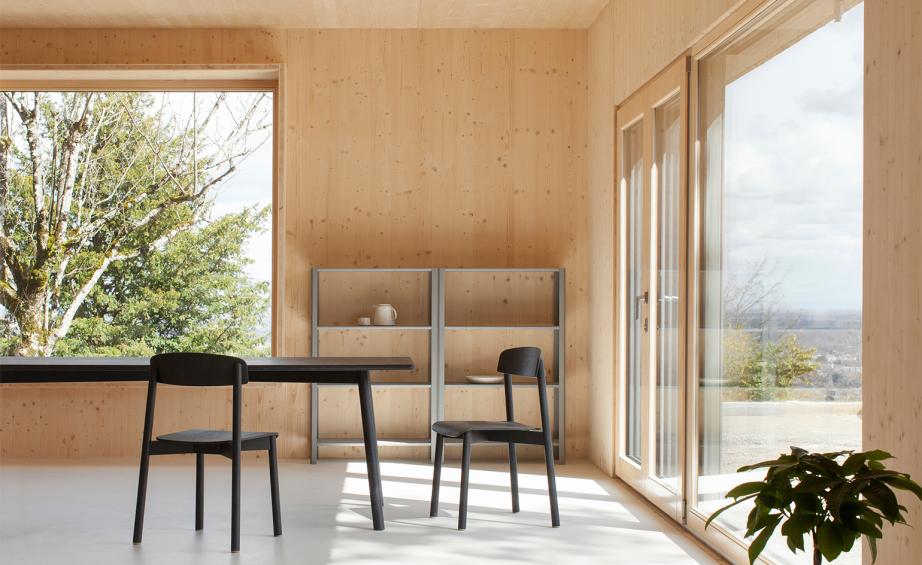

The architects ensured the house meets the spatial requirements of its occupants, by keeping the décor minimal as also to induce a feeling of contentment and peace. Image @Dezeen.
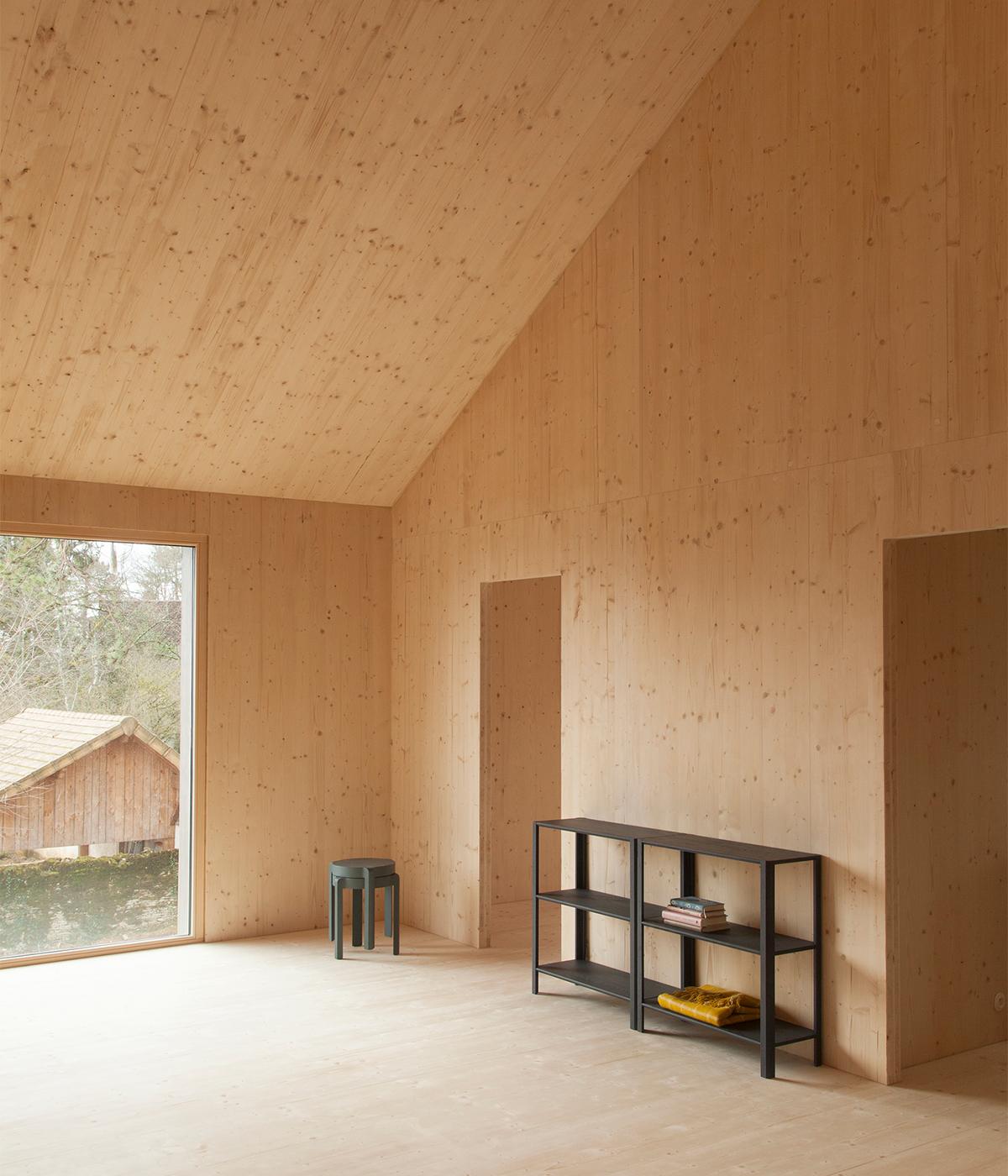

Minimalist furniture by Stattmann Neue Moebel inside Atelier Ordinare’s wood house Prefab. Image @Dezeeen.
While emotional design alone does not make an aesthetic experience, it has the power to inspire strong feelings in users, emotions which equate in high rates of retention and positive well-being. You don’t have to compute anything. There’s no secondary mental process required. You can see time vs. space. It’s very physical. We are overly indulged in the digital and we need things that ground us in our lives and in our spaces.
